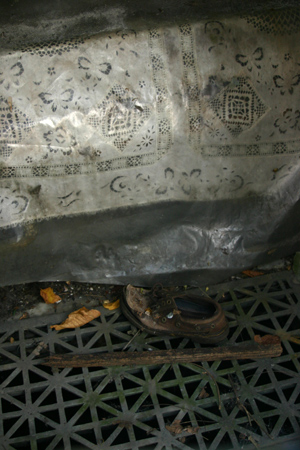A few more shots of this standard cemetery symbol in a variety of shapes & sizes:
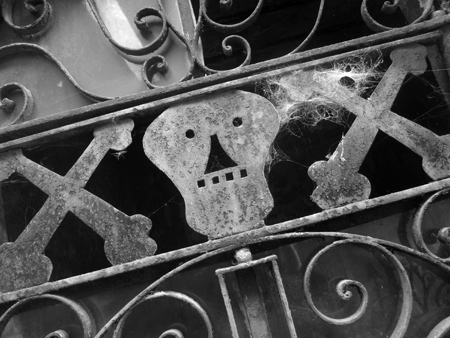
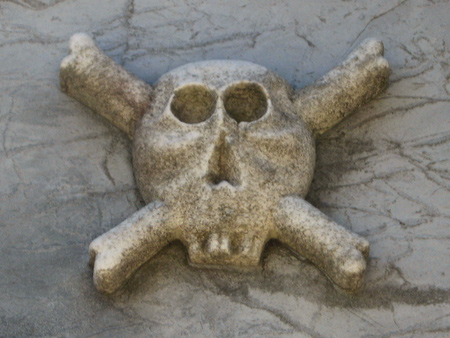
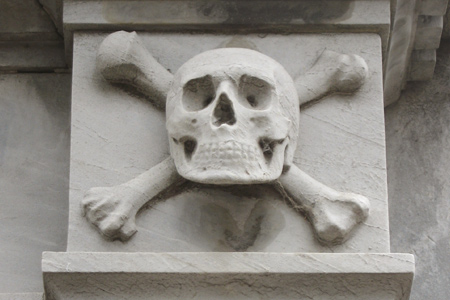
The first post about this topic can be found here.
2 CommentsA few more shots of this standard cemetery symbol in a variety of shapes & sizes:



The first post about this topic can be found here.
2 Comments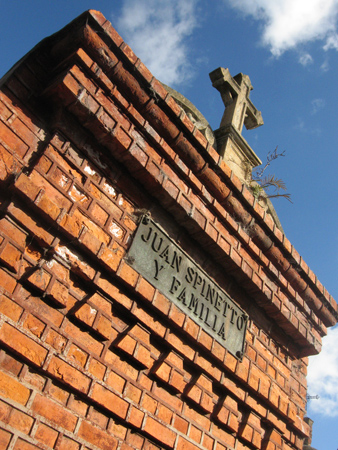
Perhaps a relative of market owner David Spinetto, the most striking thing about this family vault is that it is made of brick… or is it?? On closer inspection the façade turns out to be merely concrete marked & painted to appear like brick:
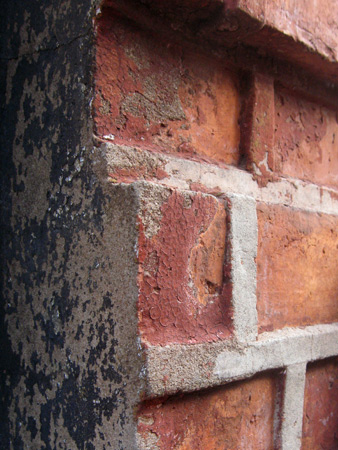
Brick has never been valued in Buenos Aires as an exterior finish. Although extensively used for the interior of walls, bricks were covered with a thin layer of concrete usually decorated to imitate stone—a technique known as simil piedra, literally “like stone” in Spanish. But since stone was in scarce supply for construction throughout the vast grasslands of the Pampas, locals decided the next best thing was to give buildings a faux finish to resemble stone.
The Spinettos took this technique even further (probably using actual brick on the interior) but choosing to decorate with faux brick instead of faux stone. Not the only example in the city, but definitely unique in Recoleta Cemetery.
Leave a Comment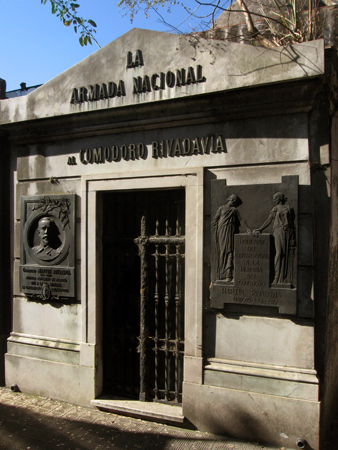
One of six grandchildren of President Bernardino Rivadavia, Martín began his military career at the age of 13. Training in Buenos Aires, Rivadavia managed to see a bit of action during the war with Paraguay in the 1860s but had a change of heart on his return home. Rivadavia left the Army & enlisted in the Navy. At the time, the Argentine military formed a single, combined unit with both Army & Navy reporting to the same commanding officers.
Rivadavia’s first naval assignment involved a patrol of Patagonia against incursions from Chile, following the expedition by Comodoro Luis Py. He rose in rank quickly, & in 1888 Rivadavia was given command of the corvette “La Argentina” which lead the first training mission for new cadets. The next command for Rivadavia was the cruiser “25 de Mayo” & he took the ship to Europe in 1892, representing Argentina during celebrations of the 400th anniversary of the voyage of Columbus.
In 1896, Rivadavia received the rank of Commodore & was put in charge of the armed forces. After the separation of the military, President Roca appointed Rivadavia as Minister of the Navy & entrusted him to command a voyage to Patagonia so Roca could improve strained relations with his Chilean counterpart. [Photo below courtesy of HISTARMAR]:
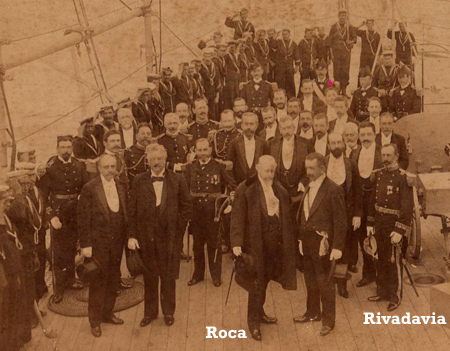
In gratitude for Rivadavia’s service during this historic mission, obligatory military service in the Navy was granted prior to that in the Army obtained a few years later by Pablo Riccheri:
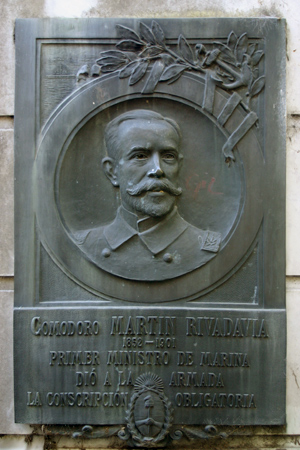
In 1901, Rivadavia had a severe fall, breaking two ribs in the process & suffering a lot of internal damage. Surgery failed to improve his condition & Rivadavia died at the age of 49. At the time of Rivadavia’s death, President Roca had sent his Vice-President Norberto Quirno Costa to Patagonia for the official foundation of a coastal town. They decided to name the new settlement Comodoro Rivadavia in remembrance of Martín, who was often present in the region. Today, Comodoro Rivadavia is the largest city in Patagonia with production/export of petroleum & natural gas driving regional growth.
Whether due to the effects of time, carelessness or deliberate vandalism (although rare in Recoleta Cemetery), the glass panes behind the wrought-iron doors to the vault have been broken. Someone covered Rivadavia’s casket with a sheet of plastic for protection, but the condition of the vault today hardly reflects the service given by one of Argentina’s military best… and who would leave a shoe inside??
